Ijraset Journal For Research in Applied Science and Engineering Technology
- Home / Ijraset
- On This Page
- Abstract
- Introduction
- Conclusion
- References
- Copyright
Study of Flexural Strength of Epoxy Composites Reinforced with Opuntia Ficus Indica Fibers
Authors: Swamy S R, Mohan Kumar G, Varun K S
DOI Link: https://doi.org/10.22214/ijraset.2024.66062
Certificate: View Certificate
Abstract
This study investigates the potential of Opuntia ficus indica (cactus) fiber as a reinforcing material in composite applications, particularly in combination with an epoxy matrix. Despite being a naturally abundant resource, cactus fiber remains underutilized in engineering. The research focuses on evaluating the flexural strength of cactus fiber-reinforced composites, with particular attention to how variations in fiber volume fraction influence bending strength. As a member of the Cactaceae family, which includes over 130 genera and nearly 1,500 species, cactus fiber offers a sustainable and eco-friendly alternative to conventional materials. With the growing demand for high-performance composite materials, this study underscores the potential of cactus fiber to enhance the mechanical properties and environmental sustainability of composite materials. Composites are prepared using cactus fibers of two lengths (8 mm and 10 mm) and varying weight fractions (20%, 25%, and 30%). The fibers are treated with a 5% Sodium Hydroxide (NaOH) solution by soaking it for 24 hours. The study investigates how fiber treatment, length, and loading affects the flexural strength or bending strength of cactus fibers. Results indicate that alkali-treated cactus fiber composites exhibit superior mechanical properties compared to untreated composites. Composites reinforced with 10 mm fibers show improved mechanical behavior over those reinforced with shorter fibers.
Introduction
I. INTRODUCTION
A composite is a structural material that consists of two or more combined constituents that are combined at a macroscopic level and are not soluble in each other. One constituent is called the reinforcing phase and the one in which it is embedded is called the matrix. The reinforcing phase material may be in the form of fibers, particles, or flakes. The matrix phase materials are generally continuous. Examples of composites are cemented carbides, plastic moulding compounds with fillers, rubber mixed with carbon black, and wood etc.

Fig. 1 Formation of Composites
In composite materials, fibers serve as the primary load-bearing components, while the matrix holds them in place, ensures proper alignment, acts as a medium for stress transfer, and shields them from environmental damage. The matrix's main role is to transfer stresses between the reinforcing fibers or particles and protect them from mechanical or environmental harm. Meanwhile, the addition of fibers or particles enhances the composite's mechanical properties, such as strength and stiffness. The goal is to combine the superior properties of both materials while minimizing their weaknesses. The reinforcement imparts unique mechanical and physical characteristics that improve the matrix's performance. Composites offer material properties that are not achievable with individual constituents, and the variety of matrix and reinforcement options allows for tailored designs to meet specific needs.
Composites have gained significant importance due to their lightweight nature, high specific strength and stiffness, excellent fatigue and corrosion resistance compared to metals like steel and aluminium. Additional benefits of composites include the ability to achieve directional mechanical properties, low thermal expansion, and high dimensional stability. The combination of superior physical, thermal, and mechanical properties make composites an attractive alternative to metals, especially when weight reduction is critical. By carefully selecting the matrix and reinforcement phases, composites can achieve strength and modulus comparable to or even exceeding those of traditional metallic materials. Furthermore, adding solid fillers to the matrix during preparation can further enhance the physical and mechanical properties of the composite.
Natural fibers, abundant and renewable, are especially common in tropical regions. According to the Food and Agriculture Organization, fibers such as jute, sisal, coir, and banana are readily available in developing countries. Recent studies suggest that plant fibers can be used to replace more expensive, non-renewable synthetic fibers like glass and carbon in polymer composites.
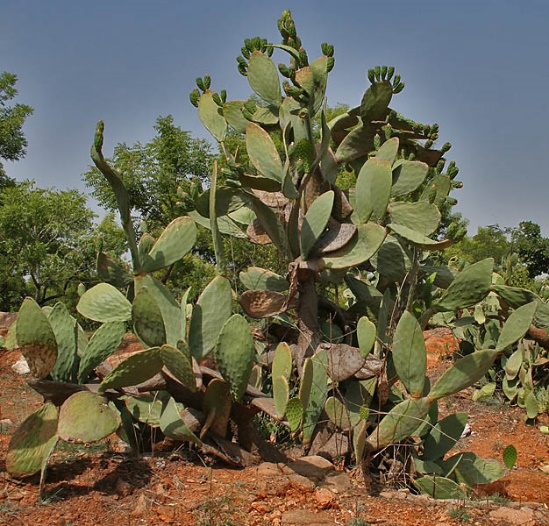
Fig. 2 Opuntia ficus-indica (the Indian fig opuntia or prickly pear) a species of cactus
II. FABRICATION OF COMPOSITES
The fine cladodes from the cactus plant were selected manually and these cladodes were soaked in water for about 10 days. The soaking process loosens the fibers and fibers can be extracted easily. The fibers were washed again with fresh water and dried.
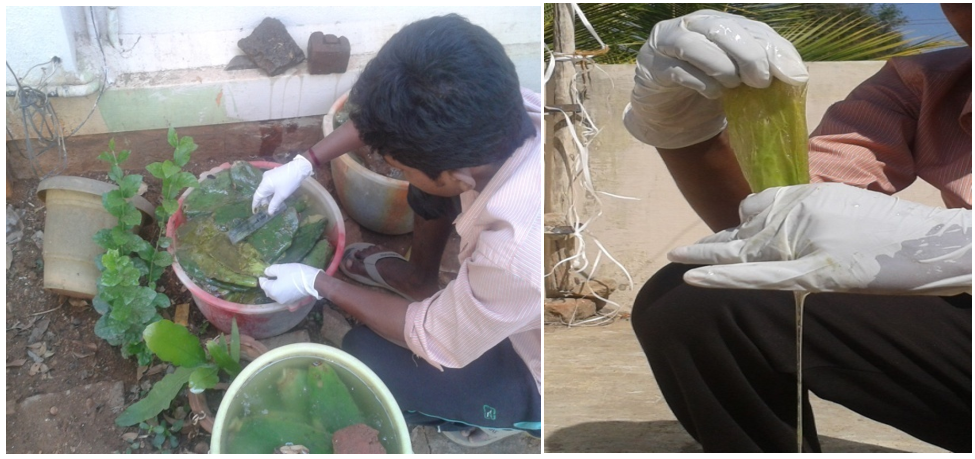
Fig. 3 Selection of cactus cladodes and soaking in water
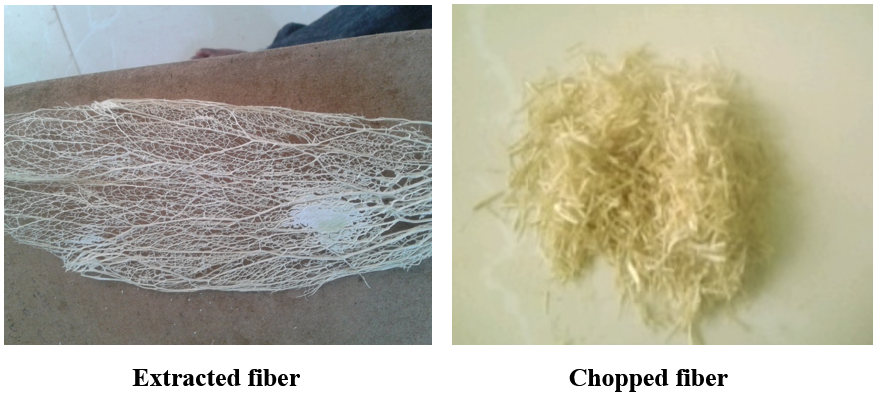
Fig. 4 Extracted cactus fibers and chopped cactus fibers

Fig. 5 Method of fabrication of specimen for tests and sample of a prepared composite
III. METHODOLOGY
In the present work short cactus fiber is used as reinforcement and epoxy as matrix material. Epoxy is basically a thermosetting resin. Epoxy resin is a versatile and highly adhesive material widely used in the construction, woodworking, and manufacturing industries.
The composite plates prepared initially are marked for required dimensions. They are cut to the markings using a wire saw for the required dimensions. The composite specimens were prepared according to the American Society for Testing of Materials (ASTM) standards. The cactus fibers are chopped into lengths of 8 mm and 10mm and also the specimens were prepared for 8 mm and 10mm separately. The edges of the specimens are rubbed against emery paper in order to bring them to the exact dimension. In the present work short cactus fiber is used as reinforcement and epoxy as matrix material. Epoxy is basically a thermosetting resin. Epoxy resin is a versatile and highly adhesive material widely used in the construction, woodworking, and manufacturing industries. In this work, different test specimens were prepared as shown in Table 1 for three different compositions.
TABLE I
Weight fraction composition of the cactus fiber Composites used
|
Serial number |
Weight Fraction Compositions of cactus Fiber Composite |
|
1 |
Short cactus fiber 30% + epoxy 70% |
|
2 |
Short cactus fiber 25% + epoxy 75% |
|
3 |
Short cactus fiber 20% + epoxy 80% |
A. Flexural Strength
Flexural strength or bending strength is the mechanical property of material, which is defined as the material's ability to resist deformation under load. The flexural strength is stress at failure in bending. It is equal to or slightly larger than the failure stress in tension. Flexural strength is the ability of the material to withstand bending forces applied perpendicular to its longitudinal axis. The stress induced due to the flexural load is a combination of compressive and tensile stresses. The test is used due to determine the flexural strength and stiffness. Flexural test specimens were prepared according to ASTM D790 standard. The dimensional view of specimens is shown in figure below. The specimen used is a rectangular bar of 25mm width × 130mm length × 7mm thickness.
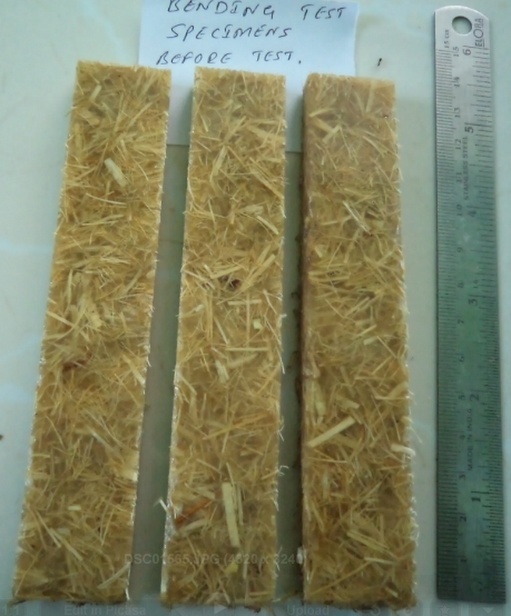
Fig. 6 Specimens used for Flexural test / Bending test.
IV. EXPERIMENTATION
In this research work, the Flexural test or Bending test of cactus reinforced epoxy composites were conducted. The experimental setup is shown below. Flexural test is conducted According to ASTM D 790 standards for composites; the experimental setup is shown below. For each test, specimen of 25mm width, length 130mm, and thickness of 7mm were prepared. The span (center to center distance between two roller supports) for each specimen is 80mm. The specimen is loaded at the center of the span through a loading cell. The test is carried until the specimen completely fails. This test was conducted using computerized universal testing machine. The figure 7 shows the universal testing machine used in this work to obtain the flexural strength property.
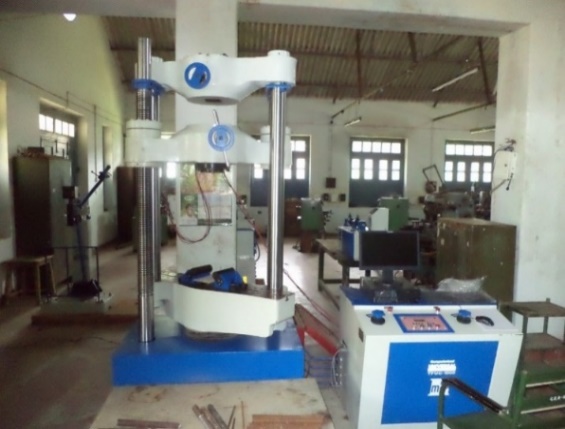
Fig. 7 Computerized universal testing machine.
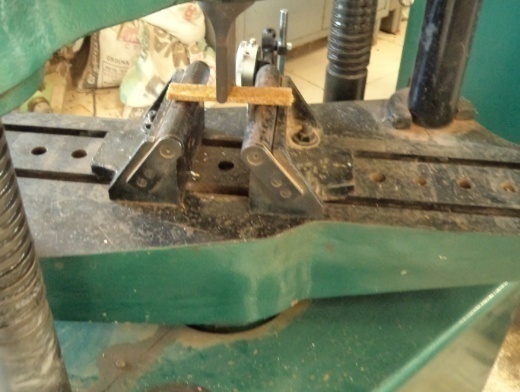
Fig. 8 Experimental setup used for bending test.
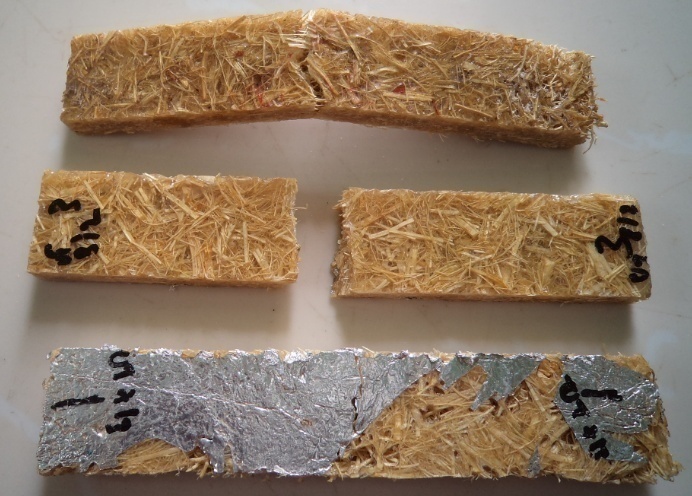
Fig. 9 Bending test specimen after test is done.
V. RESULTS AND DISCUSSION
Mechanical properties of fiber reinforced composites depend on the nature of matrix material, the distribution and orientation of the reinforcing fibers, the nature of the fiber-matrix interfaces. Even small changes in the physical nature of the reinforcement for a given matrix may result in prominent changes in the overall mechanical properties of composites. The fibers are treated with a 5% Sodium Hydroxide (NaOH) solution. The study investigates how fiber treatment, length, and loading affect the flexural property. Results indicate that alkali-treated cactus fiber composites exhibit superior flexural strength property compared to untreated composites.
A. Bending Strength
1) Treated
TABLE III
Flexural / Bending Strength of Composites (Treated)
|
Sl. No.
|
Different composition content |
|||||
|
Matrix -70% Reinforcement-30% |
Matrix-75% Reinforcement-25% |
Matrix-80% Reinforcement-20% |
||||
|
Load (N) |
Displacement (mm) |
Load (N) |
Displacement (mm) |
Load (N) |
Displacement (mm) |
|
|
1 |
0 |
0 |
0 |
0 |
0 |
0 |
|
2 |
196 |
0.08 |
196 |
0.06 |
196 |
0.04 |
|
3 |
392 |
0.095 |
392 |
0.08 |
392 |
0.09 |
|
4 |
784 |
0.12 |
784 |
0.16 |
588 |
0.12 |
|
5 |
981 |
0.25 |
981 |
0.28 |
981 |
0.32 |
|
6 |
1177 |
0.9 |
1216 |
0.95 |
1177 |
0.58 |
|
7 |
1373 |
1.8 |
1334 |
1.6 |
1255 |
1.2 |
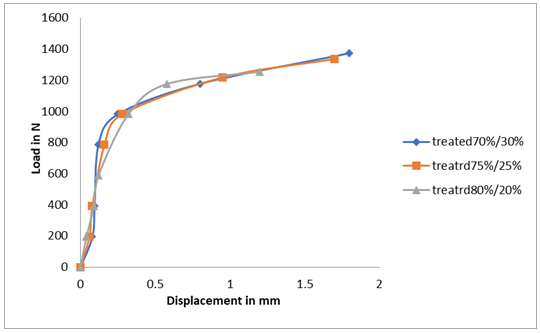
Fig. 10 Influence of treated fiber content on the flexural strength of polymer composites.
The above figure 10 shows the relation between the load and deformation for fibers which were treated with a 5% Sodium Hydroxide (NaOH) solution, with different combination composites under bending test. It can be clearly seen that as the fiber content increases the strength of the composites increases. But the 80% matrix material and 20% of cactus fiber content showing linearity in deformation. This may be due to, as the fiber content decreases the elongation of the fiber will be less and there is a strong interfacial region between the fiber and matrix form. Thus, crack travel will not move easily through the strong interfacial region and hence there is a decrease in elongation. The maximum flexural strength for 70% matrix material and 30% fiber composite was higher and other two combination exhibited low flexural strength. From the graph it is clearly evident that flexural strength increases with the increase in fiber content. And also treated composites shows maximum flexural strength as compared to untreated composites.
2) Un-Treated
TABLE IIIII
Flexural / Bending Strength of Composites (Un-treated)
|
Sl. No.
|
Different composition content |
|||||
|
Matrix -70% Reinforcement-30% |
Matrix-75% Reinforcement-25% |
Matrix-80% Reinforcement-20% |
||||
|
Load (N) |
Displacement (mm) |
Load (N) |
Displacement (mm) |
Load (N) |
Displacement (mm) |
|
|
1 |
0 |
0 |
0 |
0 |
0 |
0 |
|
2 |
196 |
0.04 |
196 |
0.04 |
196 |
0.04 |
|
3 |
392 |
0.08 |
392 |
0.09 |
392 |
0.075 |
|
4 |
784 |
0.12 |
784 |
0.12 |
588 |
0.13 |
|
5 |
981 |
0.46 |
981 |
0.24 |
784 |
0.26 |
|
6 |
1177 |
1.08 |
1177 |
1.05 |
981 |
0.62 |
|
7 |
1236 |
1.6 |
1216 |
1.42 |
1177 |
1.2 |
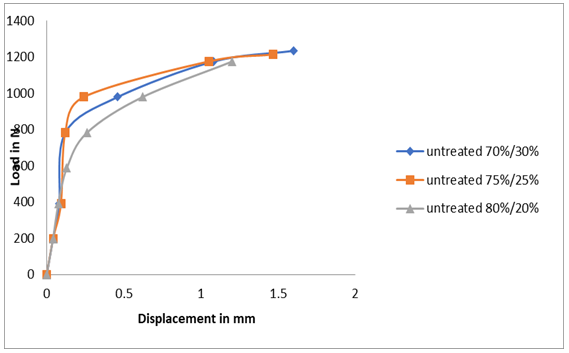
Fig. 11 Influence of un-treated fiber content on the flexural strength of polymer composites.
The above figure 11 shows the relation between the load and deformation for un-treated (i.e., plain natural cactus fibers, without treating it with 5% Sodium Hydroxide (NaOH) solution) with different combination composites under compressive test. From the Figure it can be clearly seen that the 70% matrix and 30% fiber content composites are having highest resistance to bending. And it shows linearity in deformation as load increases compare to the other content composites. The composite with 20% fiber and 80% matrix content is exhibit low flexural strength.
B. Comparison Of Treated V/S Un-Treated Of Same Compositions
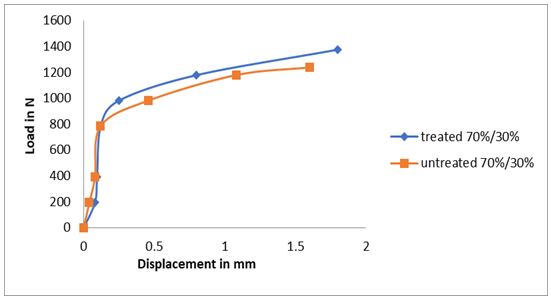
Fig. 12 Influence of 30% treated and un-treated fiber content on the flexural strength.
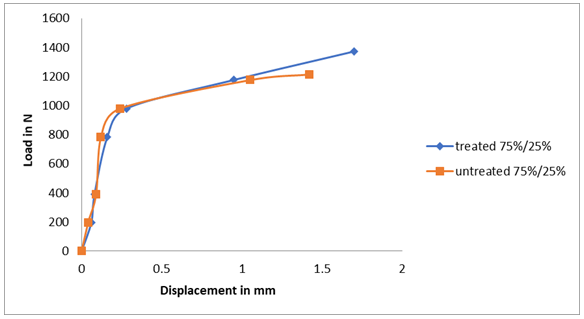
Fig. 13 Influence of 25% treated and un-treated fiber content on the flexural strength.
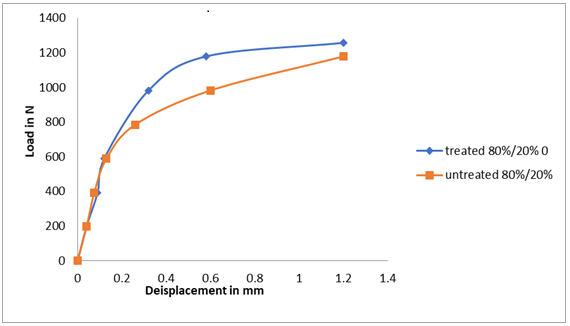
Fig. 14 Influence of 20% treated and un-treated fiber content on the flexural strength.
Figures 12, 13 and 14 shows that the flexural strength for the treated and un-treated fiber content of different combination composites. By observing the figures, the treated fiber content shows maximum load absorbing capacity as compared to the un-treated fiber content specimens. This is because, the chemical treatment improves the adhesion characteristics of fiber surface by removing hemicelluloses and lignin. This surface offers better fiber–matrix interface adhesion and the increase in mechanical properties. The 30% treated fiber content shows the maximum strength. But 20% un-treated shows very less resistance to elongation compared to the other composites. Here un-treated specimens show less strength; this is due to improper adhesive property between fiber and matrix material is less that leads to loss in mechanical properties [10]. From Figures 12, 13 and 14 it is evident that, as the fiber content increases, the compressive strength increases. And also, alkali treated composites improves mechanical properties than the un-treated composites.
Conclusion
The flexural strength or bending strength of the NaOH treated opuntia ficus indica fiber content composites are more when compared to the un-treated fiber content. Cactus fiber reinforced with epoxy composites found to have good strength at particular composition. It has been noticed that, the flexural test conducted shows good mechanical properties for 70%/30% volume fraction composites of 5% NaOH treated fiber. Hence the mechanical properties increase with the increase in fiber content.
References
[1] Authar k. Kaw, “Mechanics of Composite Material”, Taylor and Francis Group, Boca Raton, 2nd edition, (2006). [2] Chawla, Krishankumar, “Composite Materials Science and Engineering”, Springer, USA, second edition. [3] P. Noorunnisakhanam, G. Ramachandrareddy, K. Ragu, S. Venkatanaidu, “Tensile, Flexural, And, Compressive Properties of Coir/Silk Fiber-Reinforced Hybrid Composites”, journal of reinforced plastics and composites, vol.29, 2010, pp.2124-4. [4] Mohamed E. Malainine, Alain Dufresne, Danieledupeyre, Mostafamahrouz, “Structure and Morphology of Cladodes and Spines of Opuntia Ficus-Indica. Cellulose Extraction and Characterization”, Carbohydrate polymers, vol.51, 2003, pp.77-83. [5] Chittaranjan deo, S.K. Acharya, “Effect of Moisture Absorption on Mechanical Properties of Chopped Natural Fiber Reinforced Epoxy Composites”, journal of reinforced plastics and composites, vol.29, 2010, pp.2513-9. [6] Ratna Prasad A.V, Mohan Rao K, “Mechanical Properties of Natural Fiber Reinforced Polyester Composites Jowar, Sisal, And Bamboo”, material science and design, vol.32, 2011, pp.4658-4663. [7] Noorunnisa Khanam P, M. Mohan Reddy, K. Ragu, john and S. Venkata Naidu “Tensile, Flexural and Compressive Properties of Sisal/Silk Hybrid Composites”, journal of reinforced plastics and composites, vol.2, 2007, pp.1065-6. [8] Munikenche Gowda. T, A.C.B. Naidu, Rajputh Chhaya, “Some Mechanical Properties of Untreated Jute Fabric-Reinforced Polyester Composites”, composites partA, vol.30, pp.277-284. [9] Min Zhi Rong, Ming Qiu Zhang, Yuan Liu, Gui Cheng Yang, Han Min Zeng, “The Effect of Fiber Treatment on The Mechanical Properties of Unidirectional Sisal-Reinforced Epoxy Composites”, composite science and technology, vol.61, pp.1437-1447, [10] Padma priya S, Ramakrishna H.V, Ravi S.K, Varadarjulu A, “Tensile, Flexural, And Chemical Resistance Properties of Waste Silk Fabric Reinforced Epoxy laminate”, journal of reinforced plastics and composites, vol.24, 2005, pp.643-649. [11] ASTM D 790-07. Standard test method for flexural properties of unreinforced and reinforced plastics and electrical insulating materials. Annual Book of ASTM standards.
Copyright
Copyright © 2024 Swamy S R, Mohan Kumar G, Varun K S. This is an open access article distributed under the Creative Commons Attribution License, which permits unrestricted use, distribution, and reproduction in any medium, provided the original work is properly cited.

Download Paper
Paper Id : IJRASET66062
Publish Date : 2024-12-22
ISSN : 2321-9653
Publisher Name : IJRASET
DOI Link : Click Here
 Submit Paper Online
Submit Paper Online

